我们日常的开发工作避免不了和数据打交道。展示数据时,接口返回的数据结构可能没办法直接拿来使用,需要做一层转换;保存数据时,通过表单拿到的数据结构和接口定义的数据结构也可能不一致,需要做一层转换;还有一些业务场景本身的需要,需要对数据的逻辑校验等。因此避免不了会使用到一些常用的数据结构和算法。本文主要是讨论在前端开发工作中,可能会使用到的数据结构和算法。
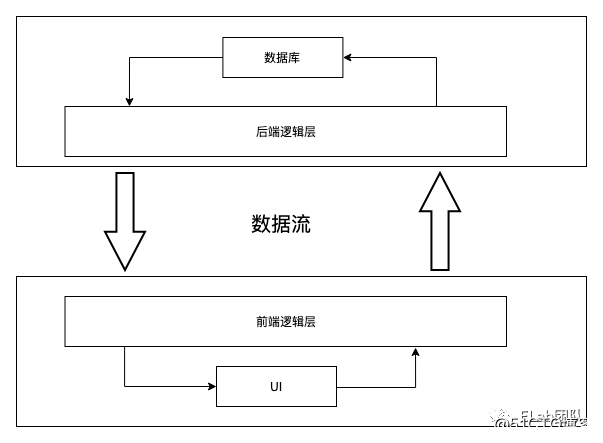 image.png
image.png栈是一种特殊的线性表。它的特点是,只能在表的一端操作。可以操作的端称为栈顶,不可以操作的另一端称为栈底。栈的特性:先进后出。
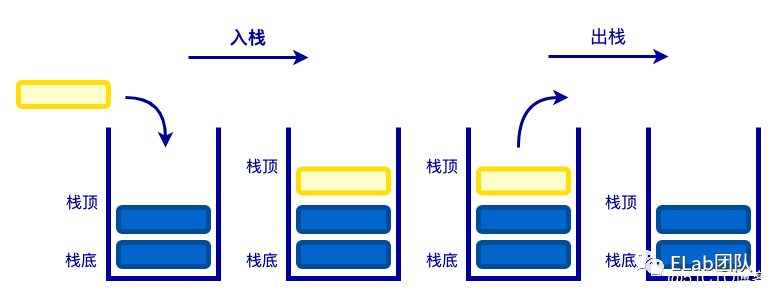
生活中的例子:蒸馒头的笼屉、羽毛球筒。
我们可以使用 JS 来模拟栈的功能。从数据存储的方式来看,可以使用数组存储数据,也可以使用链表存储数据。因为数组是最简单的方式,所以这里是用数组的方式来实现栈。
栈的操作包括入栈、出栈、清空、获取栈顶元素、获取栈的大小等。
class Stack {
constructor() {
// 存储数据
this.items = [];
}
push(item) {
// 入栈
this.items.push(item);
}
pop() {
// 出栈
return this.items.pop();
}
top() {
// 获取栈顶元素
return this.items[this.items.length - 1];
}
clear() {
// 清空栈
this.items = [];
}
size() {
// 获取栈的大小
return this.items.length;
}
isEmpty() {
// 判断栈是否为空
return this.items.length === 0;
}
}
方法一思路分析:
方法二思路分析:
// 方式一:栈
function isPairing(str = ‘‘) {
const stack = new Stack();
for(let i of str) {
if (i === ‘(‘) {
stack.push(i);
} else if (i === ‘)‘) {
if (stack.isEmpty()) {
return false;
} else {
stack.pop();
}
}
}
return stack.size() === 0;
}
// 方式二:计数
function isPairing(str = ‘‘) {
let num = 0;
for(let i of str) {
if (i === ‘(‘) {
num++;
} else if (i === ‘)‘) {
if (num === 0) {
return false;
} else {
num--;
}
}
}
return num === 0;
}
思路分析:
声明变量 stack、nodes;并从头遍历 HTML 字符串,查找字符"<"的位置;
如果字符"<"的位置等于 0:
如果字符"<"的位置大于 0:
function parseHtml(html = ‘‘) {
const startIndex = 0;
const endIndex = 0;
// 匹配标签<div>、<br/>等标签的开始部分"<div、<br"
const startTagOpen = /^<([a-zA-Z\d]+)/;
// 匹配标签<div>、<br/>等标签的闭合部分">、/>"
const startTagClose = /^\s*(\/?)>/;
// 匹配属性
const attribute = /^\s*([\w-]+)(?:="([^"]*)")?\s*/;
// 匹配闭合标签,例如</div>、</p>
const endTag = /^<\/([a-zA-Z\d]+)>/;
const stack = [];
const nodes = [];
while(html) {
// 查找<的起始位置
const index = html.indexOf(‘<‘);
if (index === 0) {
// 先匹配整体结束标签,例如</div>、</p>
let endTagMatch = html.match(endTag);
if (endTagMatch) {
if (stack[stack.length - 1]) {
if (stack[stack.length - 1].tag === endTagMatch[1]) {
// 出栈
stack.pop();
advanced(endTagMatch[0].length);
continue;
} else {
throw new Error(`起始标签和结束标签不匹配: 起始标签(${stack[stack.length - 1].tag}),结束标签(${endTagMatch[0]})`);
}
} else {
throw new Error(`${endTagMatch[0]}没有起始标签`);
}
}
// 然后匹配起始标签的开始部分,例如<div>的<div、<p>的<p、<br/>的<br
let startTagOpenMatch = html.match(startTagOpen);
if (startTagOpenMatch) {
const node = {
nodeType: 1,
tag: startTagOpenMatch[1],
attrs: [],
children: [],
};
advanced(startTagOpenMatch[0].length);
let end, attr;
// 匹配标签属性列表
while(!(end = html.match(startTagClose)) && (attr = html.match(attribute))) {
advanced(attr[0].length);
node.attrs.push({
name: attr[1],
value: attr[2],
});
}
// 匹配起始标签的结束部分
if (end) {
if (stack.length === 0) {
nodes.push(node);
} else {
stack[stack.length - 1].children.push(node);
}
// 自闭和标签不加入栈中
if (end[1] !== ‘/‘) {
stack.push(node);
}
advanced(end[0].length);
}
}
} else {
// 文本
const node = {
nodeType: 3,
textContent: html.slice(0, index)
};
if (stack.length === 0) {
nodes.push(node);
} else {
stack[stack.length - 1].children.push(node);
}
advanced(node.textContent.length);
}
}
function advanced(n) {
html = html.substring(n);
}
return nodes;
}
parseHtml(‘<div id="test" class="a b"></div>‘);
parseHtml(‘<div id="test" class="a b">Hello World</div>‘);
parseHtml(‘开始<div id="test" class="a b">Hello World</div>‘);
parseHtml(‘<div id="test" class="a b"><br class="br" />Hello World</div>‘);
parseHtml(‘</div>‘);
parseHtml(‘<div></p>‘);
思路分析:
/*
比较版本号大小
v1:第一个版本号
v2:第二个版本号
如果版本号相等,返回 0, * 如果第一个版本号低于第二个,返回 -1,否则返回 1.
*/
function compareVersion(v1, v2) {
if (!v1 && !v2) return 0;
if (!v1) return -1;
if (!v2) return 1;
const v1Stack = v1.split(‘.‘);
const v2Stack = v2.split(‘.‘);
const maxLen = Math.max(v1Stack.length, v2Stack.length);
for(let i = 0; i < maxLen; i++) {
// 必须转整,否则按照字符顺序比较大小
const prevVal = ~~v1Stack[i];
const currVal = ~~v2Stack[i];
if (prevVal > currVal) {
return 1;
}
if (prevVal < currVal) {
return -1;
}
}
return 0;
}
console.log(compareVersion("2.2.1", "2.2.01")); // 0
console.log(compareVersion("2.2.1", "2.2.0")); // 1
console.log(compareVersion("2.2.1", "2.1.9")); // 1
console.log(compareVersion("2.2", "2.1.1")); // 1
console.log(compareVersion("2.2", "2.2.1")); // -1
console.log(compareVersion("2.2.3.4.5.6", "2.2.2.4.5.12")); // 1
console.log(compareVersion("2.2.3.4.5.6", "2.2.3.4.5.12")); // -1
队列也是一种特殊的线性表,它的特点是,只能在表的一端进行删除操作,而在表的另一点进行插入操作。可以进行删除操作的端称为队首,而可以进行插入操作的端称为队尾。删除一个元素称为出队,插入一个元素称为入队。和栈一样,队列也是一种操作受限制的线性表。队列的特性:先进先出 (FIFO,First-In-First-Out)。
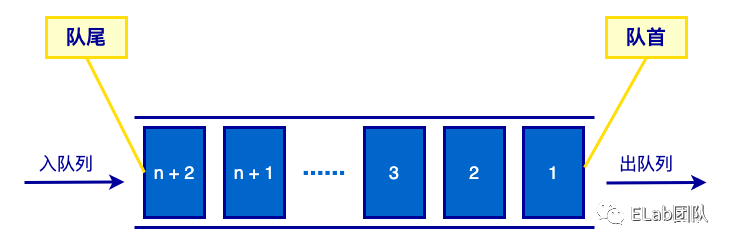
生活中的例子:排队买东西。
我们也可以使用 JS 来模拟队列的功能。从数据存储的方式来看,可以使用数组存储数据,也可以使用链表存储数据。因为数组是最简单的方式,所以这里是用数组的方式来实现队列。
队列的操作包括入队、出队、清空队列、获取队头元素、获取队列的长度等。
class Queue {
constructor() {
// 存储数据
this.items = [];
}
enqueue(item) {
// 入队
this.items.push(item);
}
dequeue() {
// 出队
return this.items.shift();
}
head() {
// 获取队首的元素
return this.items[0];
}
tail() {
// 获取队尾的元素
return this.items[this.items.length - 1];
}
clear() {
// 清空队列
this.items = [];
}
size() {
// 获取队列的长度
return this.items.length;
}
isEmpty() {
// 判断队列是否为空
return this.items.length === 0;
}
}
有一个数组存放了 100 个数据 0-99,要求每隔两个数删除一个数,到末尾时再循环至开头继续进行,求最后一个被删除的数字。
思路分析
function ring(arr) {
const queue = new Queue();
arr.forEach(v => queue.enqueue(v));
let index = 0;
while(queue.size() > 1) {
const item = queue.dequeue();
if (++index % 3 !== 0) {
queue.enqueue(item);
}
}
return queue.head();
}
斐波那契数列(Fibonacci sequence),又称黄金分割数列,因数学家莱昂纳多·斐波那契(Leonardoda Fibonacci)以兔子繁殖为例子而引入,故又称为“兔子数列”,指的是这样一个数列:0、1、1、2、3、5、8、13、21、34、……在数学上,斐波那契数列以如下被以递推的方法定义:F(0)=0,F(1)=1, F(n)=F(n - 1)+F(n - 2)(n ≥ 2,n ∈ N*)。
function fiboSequence(num) {
if (num < 2) return num;
const queue = [];
queue.push(0);
queue.push(1);
for(let i = 2; i < num; i++) {
const len = queue.length;
queue.push(queue[len - 2] + queue[len - 1]);
}
return queue;
}
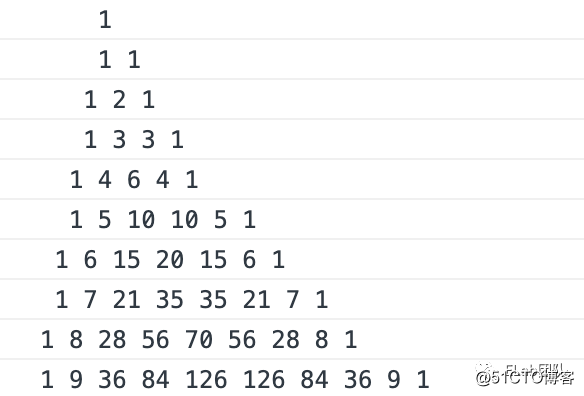
思路分析:
function printYangHui(num) {
const queue = [];
// 存储第一行数据
queue.push(1);
for(let i = 1; i <= num; i++) {
let rowArr = [];
// 填充空格
for(let j = 0; j < Math.floor((num - i) / 2); j++) {
rowArr.push(‘‘);
}
let prev = 0;
for(let j = 0; j < i; j++) {
const num = queue.shift();
queue.push(prev + num);
rowArr.push(num);
prev = num;
}
queue.push(1);
console.log(rowArr.join(‘ ‘));
}
}
printYangHui(10);
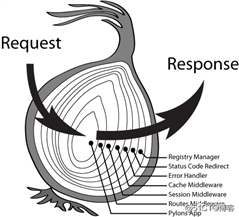
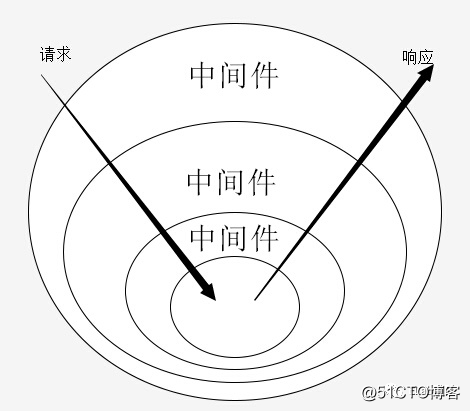
完善代码,实现输出 1、2、3。
function createApp(){
return {
use(fn){},
run(){},
}
}
const app = createApp();
app.use((next)=>{
setTimeout(function(){
next();
})
console.log(new Date() ,‘1‘);
})
app.use((next)=>{
console.log(new Date() ,‘2‘);
next();
})
app.use((next)=>{
console.log(new Date() ,‘3‘);
next();
})
app.run();
由若干个结点链结成一个链表,称之为链式存储结构。
链表和数组的区别
链表和数组都可以存储多个数据,那么链表和数组有什么区别呢?
数组需要一块连续的内存空间来存储数据,对内存的要求比较高。而链表却相反,它并不需要一块连续的内存空间。链表是通过指针将一组零散的内存块串联在一起。
相比数组,链表是一种稍微复杂一点的数据结构。两者没有好坏之分,各有各的优缺点。
由于内存存储特性,数组可以实现快速的查找元素,但是在插入和删除时就需要移动大量的元素。原因就在于相邻元素在内存中的位置也是紧挨着的,中间没有空隙,因此就无法快速添加元素。而当删除后,内存空间中就会留出空隙,自然需要弥补。


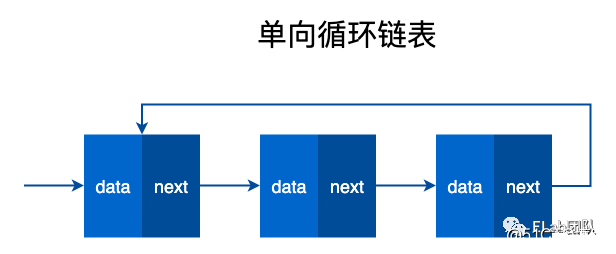

const Node = function (data) {
this.data = data;
this.next = null;
}
const node1 = new Node(1);
const node2 = new Node(2);
const node3 = new Node(3);
node1.next = node2;
node2.next = node3;
给定一个链表,如何判断链表中是否有环?

思路分析:
const Node = function (data) {
this.data = data;
this.next = null;
}
const nodeA = new Node(‘A‘);
const nodeB = new Node(‘B‘);
const nodeC = new Node(‘C‘);
const nodeD = new Node(‘D‘);
const nodeE = new Node(‘E‘);
nodeA.next = nodeB;
nodeB.next = nodeC;
nodeC.next = nodeD;
nodeD.next = nodeE;
nodeE.next = nodeC;
function isCircularLinkedList(head) {
if (head === null || head.next === null) {
return false;
}
let point1 = head;
let point2 = head;
do {
point1 = point1.next;
point2 = point2.next && point2.next.next;
} while(point1 && point2 && point1 !== point2);
if (point1 === point2) {
return true;
}
return false;
}
console.log(isCircularLinkedList(nodeA));
判断两个单链表是否相交并求出相交的第一结点。

思路分析:
function intersectNode(head1, head2) {
if (head1 && head2) {
// 计算链表的长度
let len1 = 0, p = head1;
let len2 = 0, q = head2;
while(p.next) {
len1++;
p = p.next;
}
while(q.next) {
len2++;
q = q.next;
}
if (p === q) {
// p指向短链,q指向长链
let len = 0;
if (len1 > len2) {
len = len1 - len2;
p = head2;
q = head1;
} else {
len = len2 - len1;
p = head1;
q = head2;
}
while(len > 0) {
len--;
q = q.next;
}
while(p && q && p !== q) {
p = p.next;
q = q.next;
}
return p;
}
}
return null;
}
const Node = function (data) {
this.data = data;
this.next = null;
}
const nodeA = new Node(‘A‘);
const nodeB = new Node(‘B‘);
const nodeC = new Node(‘C‘);
const node1 = new Node(‘1‘);
const node2 = new Node(‘2‘);
const node3 = new Node(‘3‘);
const nodeD4 = new Node(‘D4‘);
const nodeE5 = new Node(‘E5‘);
nodeA.next = nodeB;
nodeB.next = nodeC;
nodeC.next = nodeD4;
node1.next = node2;
node2.next = node3;
node3.next = nodeD4;
nodeD4.next = nodeE5;
console.log(intersectNode(nodeA, node1));
请判断一个链表是否为回文链表。

思路分析:
const Node = function (data) {
this.data = data;
this.next = null;
}
const node1 = new Node(‘A‘);
const node2 = new Node(‘B‘);
const node3 = new Node(‘C‘);
const node4 = new Node(‘C‘);
const node5 = new Node(‘B‘);
const node6 = new Node(‘A‘);
node1.next = node2;
node2.next = node3;
node3.next = node4;
node4.next = node5;
node5.next = node6;
const isPalindrome = head => {
let a = ‘‘, b = ‘‘;
while(head !== null) {
a = a + head.data;
b = head.data + b;
head = head.next;
}
return a === b;
}
console.log(isPalindrome(node1));
树是一种数据结构,它是由 n(n>=1)个有限节点组成一个具有层次关系的集合。把它叫做“树”是因为它看起来像一棵倒挂的树,也就是说它是根朝上,而叶朝下的。
// 二叉树的实现
function Node(data) {
this.data = data;
this.left = null;
this.right = null;
}
const nodeA = new Node(‘A‘);
const nodeB = new Node(‘B‘);
const nodeC = new Node(‘C‘);
const nodeD = new Node(‘D‘);
const nodeE = new Node(‘E‘);
const nodeF = new Node(‘F‘);
const nodeG = new Node(‘G‘);
nodeA.left = nodeB;
nodeA.right = nodeC;
nodeB.left = nodeD;
nodeB.right = nodeE;
nodeC.left = nodeF;
nodeC.right = nodeG;
我们日常工作中接触到最多的是多叉树。
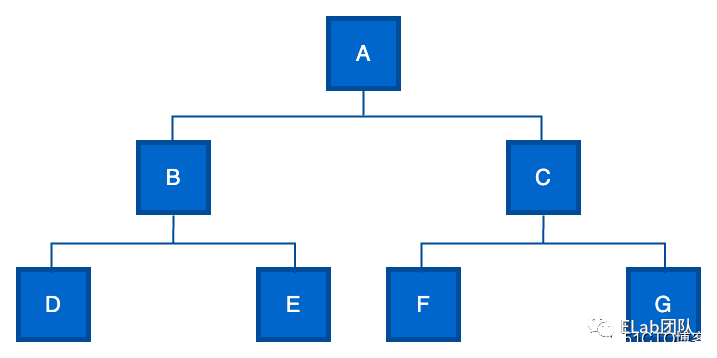
深度优先遍历
先序遍历(又称先根遍历)为 ABDECFG(根-左-右)。
中序遍历(又称中根遍历)为 DBEAFCG(左-根-右)(仅二叉树有中序遍历)。
后序遍历(又称后根遍历)为 DEBFGCA(左-右-根)。
广度优先遍历
层序遍历为 ABCDEFG。
图(Graph)结构是一种非线性的数据结构,图在实际生活中有很多例子,比如交通运输网,地铁网络,等等都可以抽象成图结构。图结构比树结构复杂的非线性结构。
图是由若干个顶点和边组成。
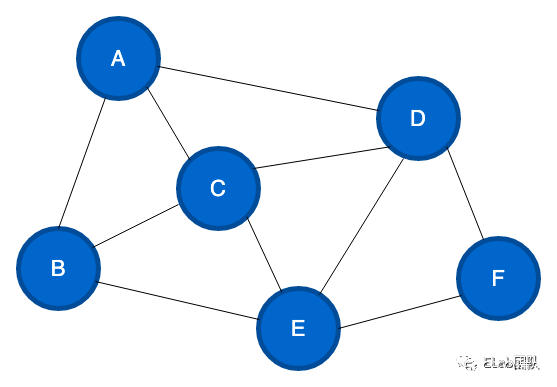
如果一个图结构中,所有的边都没有方向性,那么这种图便称为无向图。
一个图结构中,边是有方向性的,那么这种图就称为有向图。
如果给边加上一个值表示权重,这种图就是加权图。
如果图中任意两个节点都能找到路径可以将它们进行连接,则称该图为连通图。
图有两种表示方法:邻接矩阵、邻接链表。不同的场景及算法可能需要不同的图表示方式,一般情况下当结点数量非常庞大时,会造成矩阵非常稀疏,空间开销会较大,此时使用邻接链表的表示方式会占用较少的空间。而如果是稠密矩阵或者需要快速判断任意两个结点是否有边相连等情况,可能邻接矩阵更合适。
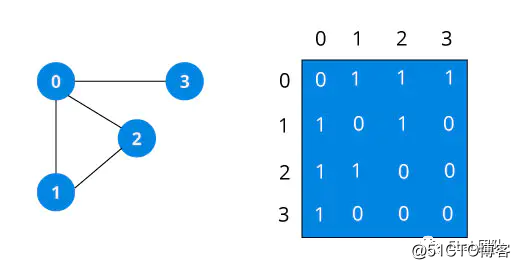

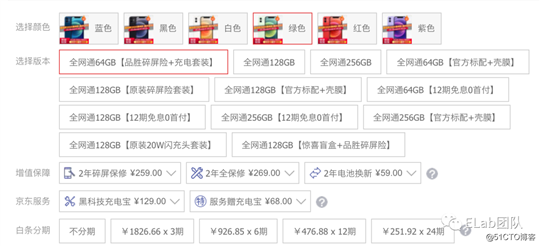
LRU 是 Least Recently Used 的缩写,即最近最少使用,是一种常用的页面置换算法,将最近最久未使用的页面予以淘汰。
核心的思想就是“如果数据最近被访问,那么将来被访问的几率也就更高”。

思路分析:
选择合适的数据结构。
结论:哈希表 + 双向链表。
使用哈希表的目的就是快速访问到存储在双向链表中的数据,存储双向链表的 key 和节点的引用;使用双向链表的目的就是快速进行节点位置的移动和删除,存储 key 和对应的数据。
设置虚拟节点,方便快速的访问头尾节点。初始时没有添加真实的节点,所以需要将虚拟节点的前驱指针和后继指针指向自己。
get 方法的实现。
put 方法的实现。
function Node(key, value) {
this.key = key;
this.value = value;
this.prev = null;
this.next = null;
}
class LRUCache {
constructor(capacity) {
this.capacity = capacity; // 容量
this.hash = {}; // 哈希表
this.count = 0; // 当前节点数量
this.virtualNode = new Node(); // 虚拟结点
// 相互引用
this.virtualNode.next = this.virtualNode;
this.virtualNode.prev = this.virtualNode;
}
get(key) {
const node = this.hash[key];
if (node) {
this.moveToHead(node);
return node.value;
}
}
put(key, value) {
const node = this.hash[key];
if (node) {
node.value = value;
this.moveToHead(node);
} else {
if (this.count === this.capacity) {
this.removeLRUItem();
}
const newNode = new Node(key, value);
this.hash[key] = newNode;
this.addToHead(newNode);
this.count++;
}
}
remove(key) {
const node = this.hash[key];
if (node) {
this.removeFromList(node);
Reflect.deleteProperty(this.hash, key);
this.count--;
}
}
isEmpty() {
return this.count === 0;
}
moveToHead(node) {
this.removeFromList(node);
this.addToHead(node);
}
removeFromList(node) {
const prevNode = node.prev;
const nextNode = node.next;
prevNode.next = nextNode;
nextNode.prev = prevNode;
node.prev = null;
node.next = null;
}
addToHead(node) {
const nextNode = this.virtualNode.next;
this.virtualNode.next = node;
nextNode.prev = node;
node.prev = this.virtualNode;
node.next = nextNode;
}
removeLRUItem() {
const tailNode = this.virtualNode.prev;
this.remove(tailNode.key);
}
}
const cache = new LRUCache(5);
console.log(cache.isEmpty());
cache.put(‘A‘, ‘A‘);
cache.put(‘B‘, ‘B‘);
cache.put(‘C‘, ‘C‘);
cache.put(‘D‘, ‘D‘);
cache.put(‘E‘, ‘E‘);
console.log(cache.get(‘A‘));
cache.put(‘F‘, ‘F‘);
console.log(cache.get(‘B‘));
console.log(cache.isEmpty());
cache.remove(‘E‘);
cache.remove(‘F‘);
cache.remove(‘A‘);
cache.remove(‘C‘);
cache.remove(‘D‘);
console.log(cache.isEmpty());
console.log(cache);
原文:https://blog.51cto.com/u_15308298/3146949